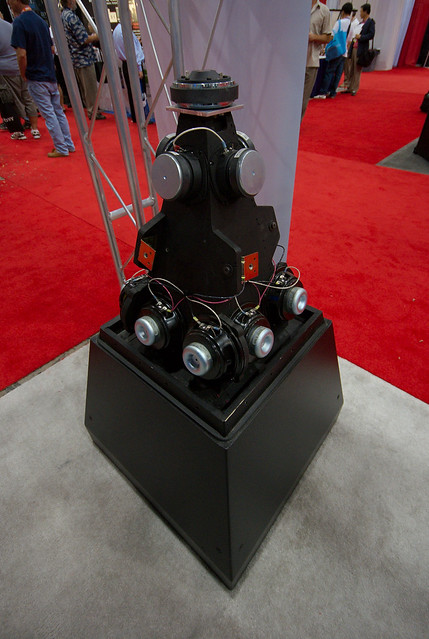Thank you all for the information, I have a lot to digest!
I did see that listing Patrick! Small world. While tempting, I want this to be a learning process for me. I have a pair of Macs atm so I am not hurting while I learn
The reason I was interested in using a planar is because I particularly enjoy responsive top end of a planar/ribbon tweeter. I did hear a set of Alcons and while phenomenal in their own right, that special ribbon tweeter of theirs is not for sale
Since I am not well versed in what is available on parts express, are there any recommendations for the top end that is very tight and good at reproducing transients without taking too long to settle?
I did see that listing Patrick! Small world. While tempting, I want this to be a learning process for me. I have a pair of Macs atm so I am not hurting while I learn
The reason I was interested in using a planar is because I particularly enjoy responsive top end of a planar/ribbon tweeter. I did hear a set of Alcons and while phenomenal in their own right, that special ribbon tweeter of theirs is not for sale
Since I am not well versed in what is available on parts express, are there any recommendations for the top end that is very tight and good at reproducing transients without taking too long to settle?
That's a Danley SH-50 with the top removed

Here's an SH25
John, am I the only one to notice that that speaker is not at all like the previous one? Only that the drivers, cabinet structure, and crossover mounting are all different....!
...are there any recommendations for the top end that is very tight and good at reproducing transients without taking too long to settle?
Two-inch or one-inch compression driver? In other words, are you wanting to build a 2-way or 3-way MEH? Transient performance of the 2" compression driver is similar to 1" compression drivers using separate midrange drivers, IMO. This is due to the near absence of modulation distortion, i.e. frequency modulation distortion (FM), or "Doppler" distortion of the horn-loaded compression drivers relative to non-horn-loaded high frequency drivers. The larger diaphragms and horn throats of 2-inch compression drivers/horns significantly reduce throat-induced (nonlinear moisture-air condensation) distortion at higher SPLs.
With 2-way MEHs, using 2-inch compression drivers, you're spending your time getting the midbass/bass under control and getting those bands right. This is a big discriminator in terms of the sound of the finished product (30 percent of the overall loudspeaker performance...according to Toole), rather than having to deal with dialing-in two sets of crossover filters and trying to locate midrange cone drivers clustered very close to the apex-located compression driver, cutting little holes right at the throat of the horn. Then you've still got the midbass/bass problem to contend with, if using 3-way designs.
If you build your multiple entry horns a bit larger, then you eliminate the separate ported bass bin; you're able to mount the woofers directly on the multiple entry horn to get "full-range" directivity...like the Danley SH-50, SH-60, SH-96, etc. There is a reason why these horns sound better than the smaller MEHs using bass reflex bins. They are also about the same size overall as these smaller MEH+reflex bass bin designs taken together.
In my experience, overall fidelity is higher using a 2-way MEH than using 3-way. Quality two-inch compression drivers with good HF performance cost more (I recommend looking at the Faital Pro HF20AT and related 2" HF200 series compression drivers for fidelity)...but then the crossovers cost less and take much less than half the time to dial in, you're eliminating the midrange drivers, and the horn takes less time to build because you're mounting half the number of drivers--but using a bit more wood for each piece to build a larger horn mouth. Not having to use a crossover in the middle of the most sensitive frequency bands (in terms of human hearing sensitivity) is a real advantage and it shows up in listening performance.
You can still use Bill Waslo's wood cutting spreadsheet for finding the cutting pieces for building "full range" 2-way MEHs.
YMMV.
Chris
Last edited:
- Status
- This old topic is closed. If you want to reopen this topic, contact a moderator using the "Report Post" button.